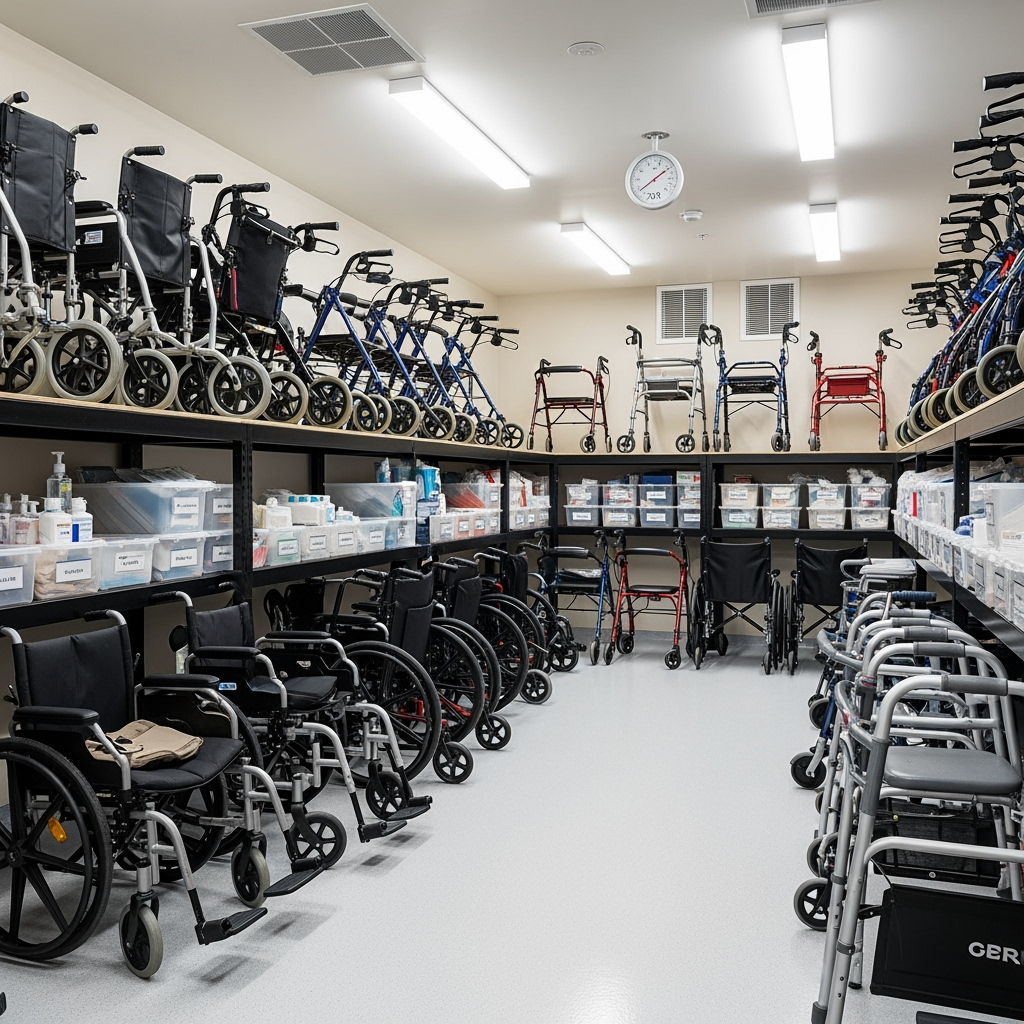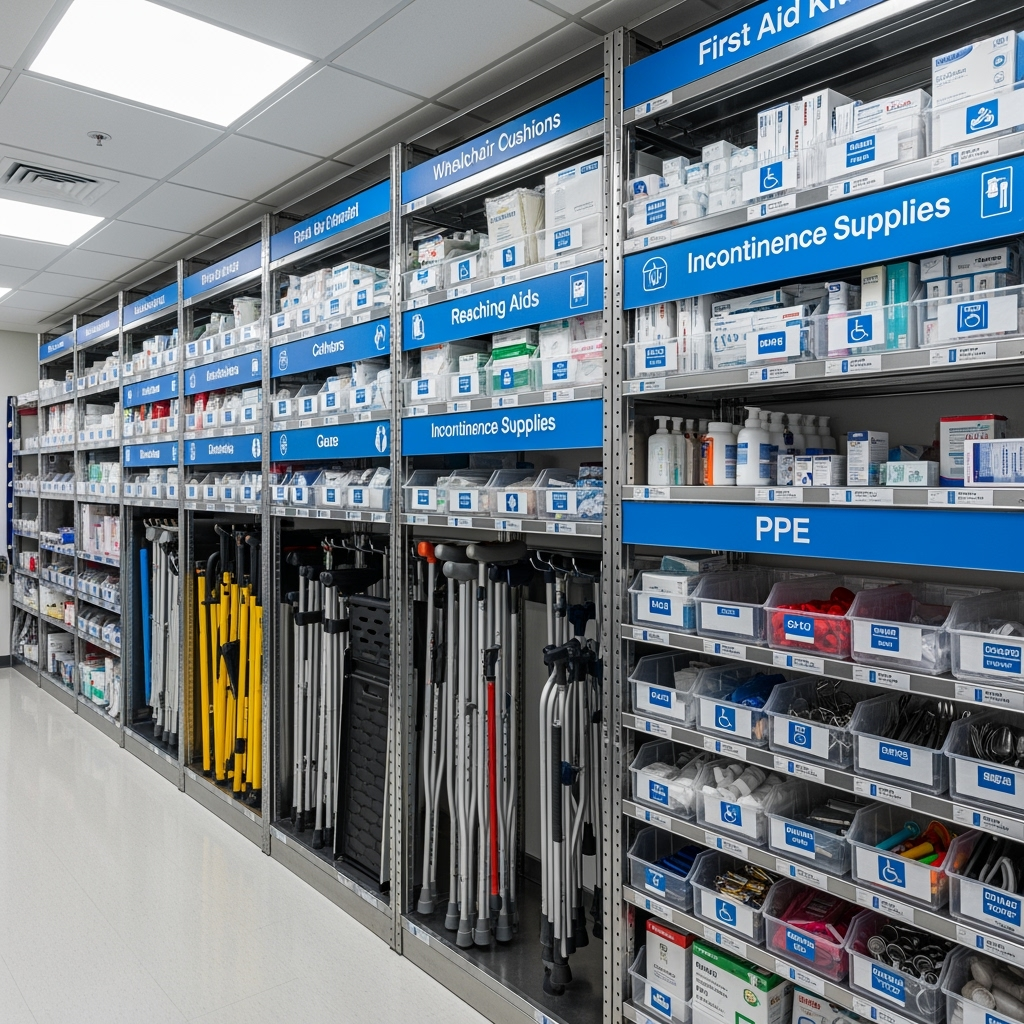Understanding the Importance of Proper Medical Equipment Storage During Home Adaptations
When adapting your home for medical needs or accessibility improvements, proper storage of medical equipment becomes crucial for both maintaining the equipment’s functionality and ensuring a smooth transition. This comprehensive guide will help you navigate the complexities of storing medical equipment while making your living space more accessible.

Choosing the Right Storage Solution for Medical Equipment
Medical equipment requires special consideration when it comes to storage. Here are essential factors to consider:
- Climate-controlled environment to prevent equipment deterioration
- Adequate space for proper equipment positioning
- Easy accessibility for regular maintenance and checks
- Secure storage to protect valuable medical investments
- Proper ventilation to prevent moisture accumulation
Organizing Your Medical Equipment Storage Space

Creating an organized storage system is vital for maintaining equipment integrity and ensuring easy access when needed:
1. Categorize Your Equipment
- Daily use items
- Backup equipment
- Seasonal medical supplies
- Maintenance tools and cleaning supplies
2. Implement a Labeling System
- Clear, readable labels for all items
- Color-coding for different categories
- Inventory tracking system
- Maintenance schedule markers
Temperature and Humidity Control for Medical Equipment
Proper environmental control is crucial for preserving medical equipment:
- Maintain consistent temperature between 65-75°F
- Keep humidity levels between 30-50%
- Monitor conditions regularly
- Use dehumidifiers when necessary
Safety and Accessibility Considerations
Ensure your storage solution meets these important criteria:
- Wide aisles for wheelchair access
- Proper lighting for visibility
- Secure storage of sensitive equipment
- Emergency access planning
- Regular safety checks
Creating a Maintenance Schedule
Regular maintenance is essential for medical equipment longevity:
- Weekly equipment checks
- Monthly deep cleaning
- Quarterly maintenance review
- Annual professional inspections
Tips for Temporary Storage During Home Modifications
When adapting your home, consider these storage strategies:
- Create a detailed inventory system
- Keep essential equipment easily accessible
- Plan for temporary equipment solutions
- Maintain proper cleaning protocols
Managing Storage Costs and Insurance
Protect your investment with proper financial planning:
- Document all stored equipment
- Update insurance coverage
- Track storage-related expenses
- Consider cost-sharing options
Conclusion: Making the Transition Smooth
Proper medical equipment storage during home adaptations requires careful planning and organization. By following these guidelines, you can ensure your equipment remains in optimal condition while making your living space more accessible. Remember to regularly review and update your storage system to accommodate changing needs and equipment requirements.










Leave a Reply